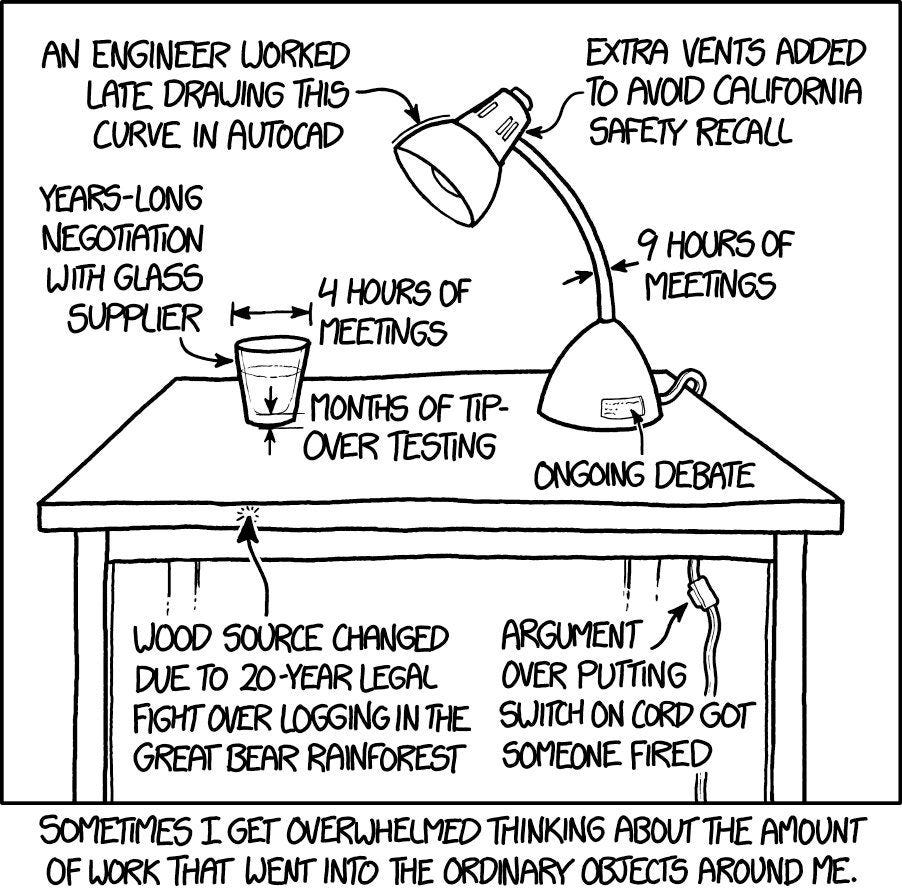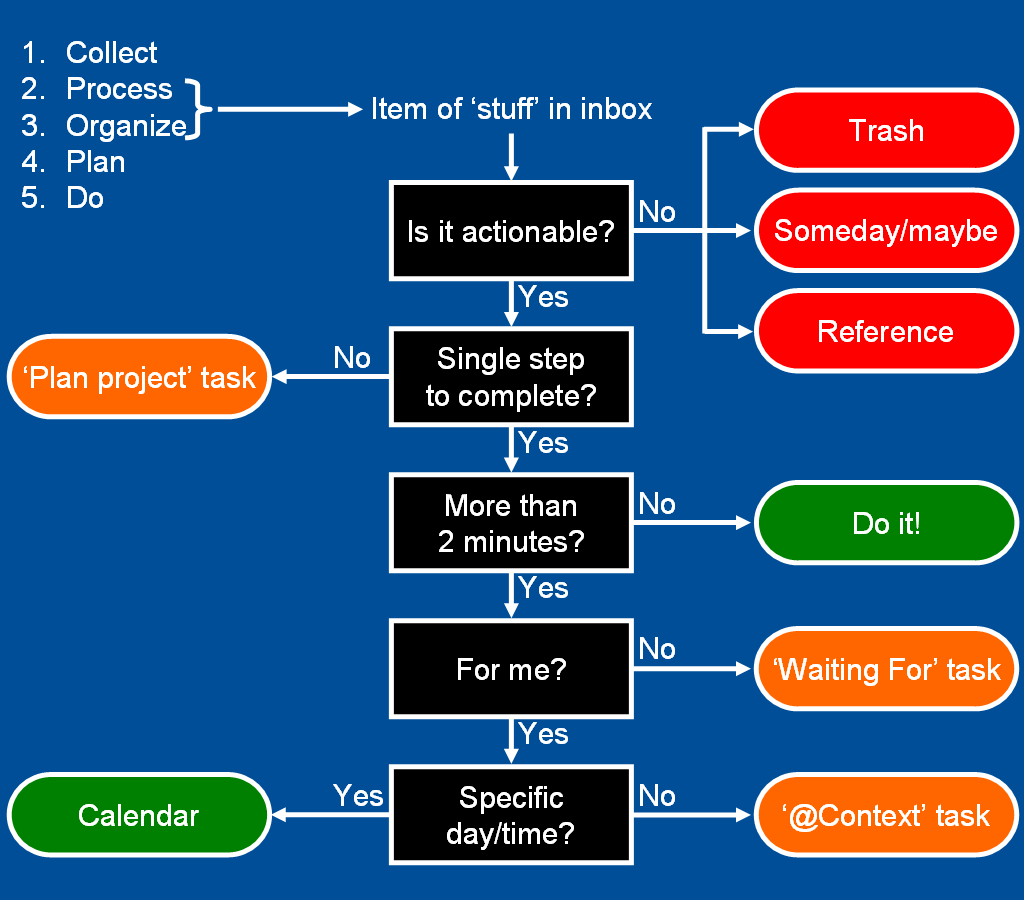Break Free from the Bike Shed: How Leaders Can Reclaim Strategic Focus
The psychology of small decisions and the tools to prioritize what matters most.
"Two police officers ate lunch here today," the VP announced during our monthly P&L review. "That's $27.90 my division shouldn't have to bear."
I had to suppress a sigh. Here was a senior executive at a $500 million operation fixating on a $28 lunch charge. This wasn't just poor judgment—it was a textbook case of what C. Northcote Parkinson dubbed "the law of triviality" back in 1957.
Parkinson’s Law of Triviality: The time spent on any agenda item will be in inverse proportion to its importance.
You may have heard of this described as “bikeshedding,” a term that arose from his example of a fictional finance committee with three items to discuss:
A $10 million nuclear reactor
A $400 employee bike shed
And $20 for employee refreshments in the breakroom
In Parkinson’s example, the nuclear reactor is approved immediately.
The bike shed, on the other hand, is the subject of considerably more debate. Should it be made of wood or aluminum? Why a shed when a rack would suffice? How will the employees who ride unicycles be impacted?
Employee refreshments take up the remaining two-thirds of the meeting time. How many coffee options should be offered? Are chips and cookies sufficient, or do we have a moral responsibility to offer healthy snacks instead? What can be done to prevent Jane in Accounting from raiding the snack drawer on her way out the door?
The VP of Customer Care was obsessed with cafeteria costs because corporate allocated them based on headcount, and with over half of the employees reporting to him, his P&L shouldered most of the burden. For months, he agonized over this expense he couldn't control. He demanded daily visitor logs, challenged every non-employee meal, and called finance meetings to dispute cost allocations.
In his defense, the expense was unfavorable to budget. But while he obsessed over tens of thousands in cafeteria costs, million-dollar opportunities gathered dust. A mere 1% improvement in call handle times would have saved $1 million annually. A 2% boost in first-call resolution rates? Another $800,000.
That was almost ten years ago. When I shared this story recently, executives nodded knowingly—not because they were arguing about cafeteria costs, but because they recognized the pattern. Only now, the bike shed has gone digital. Instead of cafeteria receipts, they're drowning in Slack threads. Rather than debating lunch charges, they spend hours meeting about Zoom backgrounds and Slack protocols.
Different decade, different tools, same psychological trap: we're still building bike sheds. They're just virtual now.
The tools have changed, but our tendency to hide in trivial decisions remains. And while these behaviors might seem harmless, their impact on organizational performance is anything but trivial.
The Real Cost of Small Decisions
Real examples reveal the staggering scale of trivial decision-making:
Zynga spent months debating their snack policy in 2012, ultimately leading to employee protests when they removed the free snacks—a decision they later reversed after losing key talent.
WeWork's leadership spent weeks in 2018 debating whether to ban meat from company events, a decision that created more executive meeting hours than their actual real estate strategy.
A McKinsey study found that the average Fortune 500 company spends 300,000 hours per year on corporate budgeting—with over 30% of that time spent on items representing less than 1% of spending.
IBM's research showed that companies spend an average of $8.2 million per year on unnecessary meetings, with small operational decisions consuming 80% more time than strategic planning.
But why do intelligent, successful leaders fall into this trap? The answer lies in the psychology behind bike-shedding.
Why Smart Leaders Get Stuck: The Psychology of Bike-Shedding
The magnetism of trivial decisions isn't just poor judgment—it's driven by four distinct psychological forces:
The Competence Trap
When leaders face complex challenges, their brains crave certainty. Small decisions offer what big ones can't:
Clear right/wrong answers
Immediate validation of expertise
Visible proof of decisiveness
Result: Leaders unconsciously gravitate toward problems they know they can solve, rather than problems worth solving.
The Digital Dopamine Loop
Modern workplace tools have turned small decisions into an addictive game:
Each Slack response delivers an instant hit of accomplishment
Digital metrics (likes, replies, resolved tickets) create artificial rewards
Quick wins become more neurologically rewarding than long-term achievements
Result: Leaders optimize for digital micro-victories instead of real organizational impact.
The Social Safety Net
Career preservation instincts make leaders risk-averse:
A failed strategic initiative can derail a career
Small decisions rarely have career-ending consequences
Peers are more likely to engage in discussions about familiar, low-stakes issues
Result: Leaders build consensus around trivial matters while avoiding necessary but risky strategic decisions.
The Illusion of Control
In chaotic business environments, leaders desperately seek certainty:
Small problems have clear solutions and measurable outcomes
Major challenges involve too many variables to control
Tactical decisions create a false sense of strategic progress
Result: Leaders mistake busy work for meaningful impact, focusing on what's controllable rather than what's crucial.
Understanding these psychological forces is the first step - but how do you know if they're affecting your leadership? The following self-assessment will help you identify your own bike-shedding tendencies.
Are You Stuck in the Bike Shed? A Leadership Self-Assessment
Now that you understand the psychological forces at play, it's time to evaluate your own (or your organization’s, if you prefer) tendencies.
What Your Score Reveals:
36-45 (Deep in the Bike Shed):
You're likely losing 30%+ of strategic time to trivial decisions
Your team is showing signs of decision fatigue
You need immediate intervention to refocus on strategic work
26-35 (Moderate Tendencies):
You're at risk of normalizing bike-shedding behavior
Your team occasionally gets stuck on small decisions
You have opportunities to reclaim strategic time
15-25 (Strategic Focus):
You maintain good balance between tactical and strategic
Your team knows how to escalate appropriately
Focus on systematizing your good habits
Under 15 (Strong Strategic Discipline):
You've developed effective filtering mechanisms
Your team excels at prioritizing high-impact work
Share your practices with others in your organization
Regardless of your score on the assessment, every leader can benefit from a systematic approach to combating bike-shedding tendencies.
The Modern Leader's Anti-Bike-Shedding Playbook: From Assessment to Action
Based on your self-assessment results, here are the key tools and implementation steps to address each major challenge area:
Meeting Behaviors
Tools:
Strategic Impact Filter: Only discuss items with 10X potential impact
Designate one attendee as the “Shed Spotter,” who calls out the low-impact discussions in real-time
70/20/10 meeting structure (70% Strategic / 20% Tactical / 10% Administrative)
Implementation:
Week 1-2: Audit current meeting patterns
Week 3-4: Introduce the “bike shedder” in meetings that tend to get pulled into drawn-out, low-stakes discussions
Month 2: Restructure all leadership meetings to 70/20/10
Month 3: Review and adjust based on attendee surveys
Digital Habits
Tools:
Designated strategic-only communication channels
Leverage a priority inbox, such as the Get Things Done system (David Allen)1
Add blocks of “strategic time” to your schedule to prevent colleagues from hijacking the time between meetings
Implementation:
Week 1-2: Add “strategic time” blocks in between long meetings to create space for deep work
Week 3-4: Set up separate strategic channels
Month 2: Implement priority inbox process
Month 3: Measure engagement patterns
Decision Patterns
Tools:
Develop a decision hierarchy template (RACI, DACI, etc.) to make clear who is needed for a decision vs who is informed/consulted/etc.
Add friction to large/expensive meetings, e.g., Shopify’s meeting cost calculator
Limit use of PowerPoint/Slides (either altogether or via number of slides permitted) to prevent over-preparation
Implementation:
Week 1-2: Create decision hierarchy
Week 3-4: Roll out new rules on use of PowerPoint/Slides
Month 2: Add friction to large/expensive meetings
Month 3: Review and optimize
Don’t Sweat the Small Stuff
The solution to bike-shedding isn't always found in complex frameworks or psychological interventions. Sometimes, it's as simple as redesigning what leaders see and where they focus their attention.
Take that VP at GoDaddy. The breakthrough came not from training or transformation but from pragmatic information design. By restructuring P&L reporting to emphasize contribution margin over bottom-line profit, we quietly removed those distracting cafeteria costs from his immediate view. The expenses were still tracked, but they no longer commanded his attention during operational reviews. The result? His energy shifted naturally to million-dollar opportunities in call center optimization and customer experience improvements.
This points to a fundamental truth about leadership: While we can't always control how people will react to what they see, we can influence what they see first.
The most powerful intervention isn't always what we add—it's what we remove.
Your Next Steps:
Take the assessment above
Choose your top psychological trigger
Implement one solution from that category this week
Track the time you reclaim
Share this framework with another leader trapped in their own bike shed
Because in the time you spent reading this article, somewhere a VP is writing their tenth email about office coffee brands. Don't let that be you.





